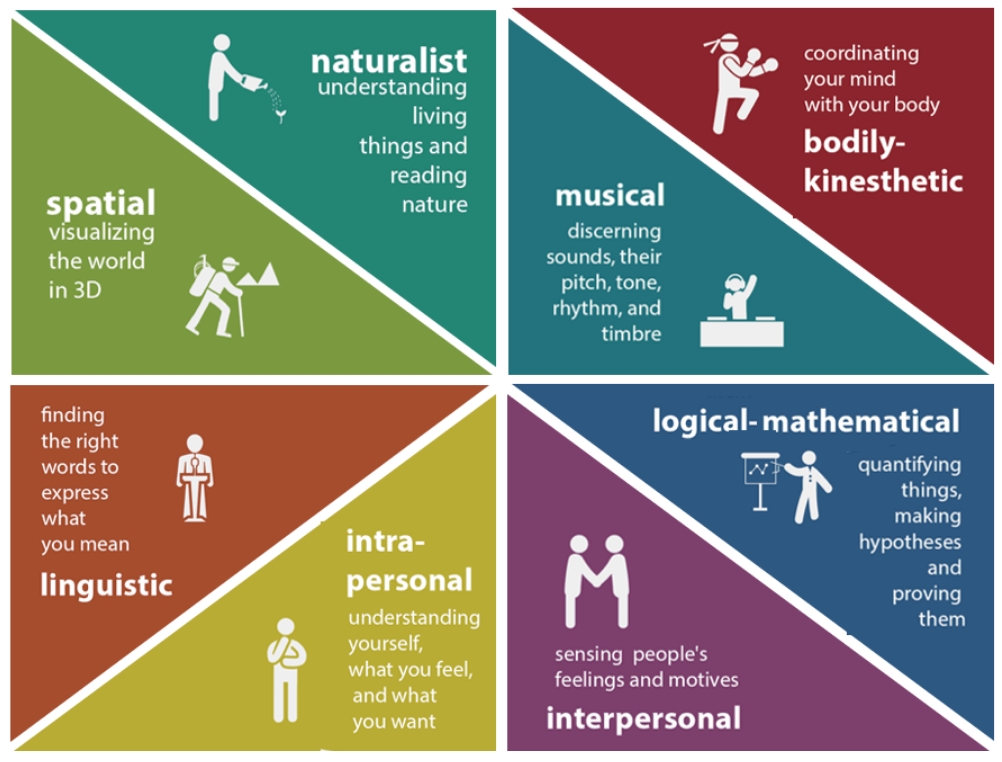
8 Types of Intelligence: Howard Gardner’s Theory of Multiple Intelligences
To continue with our theme of diversity in learning types, we will dive deeper into the world of educational psychology and discuss Howard Gardner’s Theory of Multiple Intelligences. “Intelligence,” as defined by Merriam-Webster, “is that the ability to accumulate and apply knowledge and skills.”
Historically, the concept of intelligence was utilized as a measure of your worth and potential. You are born with a level of intelligence, measured by IQ tests, and you cannot change or improve your set level of intelligence.
This definition and pre-conceived notion limited growth and block the various paths an individual can pursue. In the 1980s, a Harvard psychologist named Harvard Gardner proposed one such theory that expanded on the view of traditional intelligence.
The Theory of Multiple Intelligences
“We are all able to know the earth through language, logical-mathematical analysis, spatial representation, musical thinking, the use of the body to unravel problems or to make things, an understanding of other individuals, and an understanding of ourselves. Where individuals differ is within the strength of these intelligences – the so-called profile of intelligences -and within the ways during which such intelligences are invoked and combined to carry out different tasks, solve diverse problems, and progress in various domains.”
Howard Gardner
Gardner suggests that the long-held view of intelligence is too limiting to the entire population and that people have at least eight kinds of intelligences.
To encompass a person’s entire psyche, he theorized that people have the capacity for a range of intelligences. This range includes linguistic, musical, naturalistic, spatial-visual, and more. An individual can maintain any number of those different intelligences, and every person will have varying levels of each. Not all are measurable through the ever-popular IQ IQ test.
Counterargument to Multiple Intelligences
With every new theory comes criticism from scholars, psychologists, and educators. Most critiques note that Gardner’s definition is broad, and his identified “intelligences” are simply talents of traits. Additionally, critics note that there is not sufficient evidence to support his theory.
However, the idea of multiple intelligences is popular with educators. Many teachers utilize various intelligences in their teaching and integrate Gardner’s theory in unique ways throughout the classroom.
A Summary of the Eight
- Visual-Spatial Intelligence – Visual and spatial judgment
- Linguistic-Verbal Intelligence – Words, language, and writing
- Logical-Mathematical Intelligence – Analyzing problems and mathematical operations
- Bodily-Kinesthetic Intelligence – Physical movement and motor control
- Musical Intelligence – Rhythm and music
- Interpersonal Intelligence – Understanding and relating to other people
- Intrapersonal Intelligence – Introspection and self-reflection
- Naturalistic Intelligence – Finding patterns and relationships to nature

With each intelligence comes their strengths, common characteristics, and common career choices. Knowing your strengths and interests, or “intelligences,” can help you determine your future career path and how to get started.



